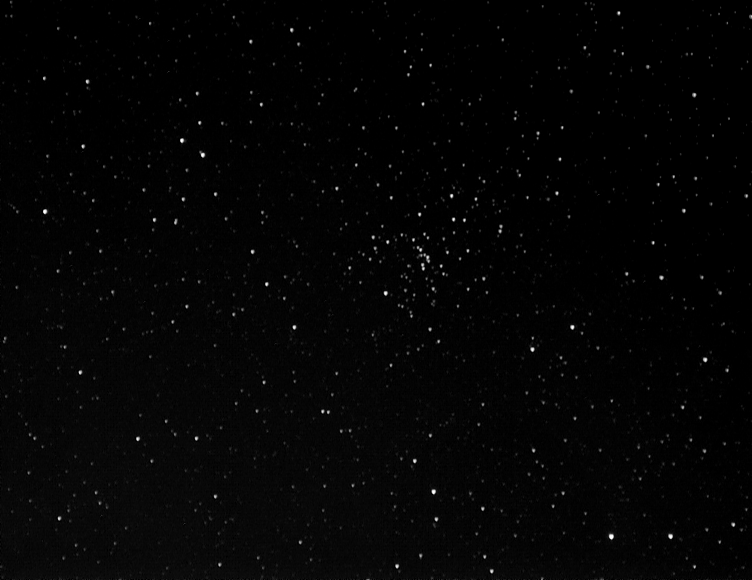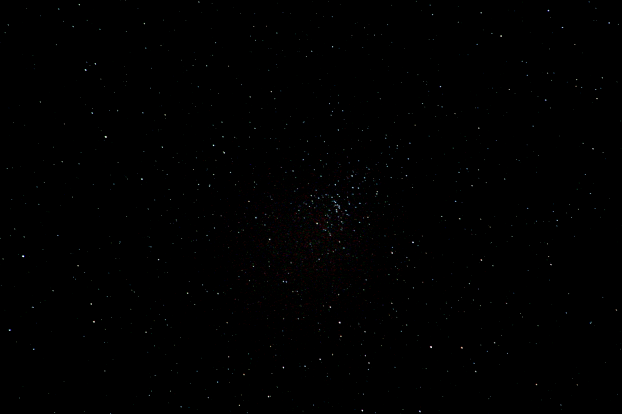

M48 was discovered by Charles Messier and included in his catalogue on 19 February 1771. However he made a large error in his position and it was rediscovered by Johann Bode in 1782 and by Caroline Herschel in 1783. Messier's error was finally corrected by Oswald Thomas in 1934. The cluster is bright enough to be visible in really dark skies, and is so large that a low power is needed to show it in a telescope. The more concentrated core subtends about 30 arc-minutes but the outer parts extend to 54 arc-minutes. This corresponds to a diameter of 23 light-years at a distance of 1,500 light-years. It is estimated to be 300 million years old.

|
The cluster is far too big to be imaged with my LX200, even with a focal reducer, so this picture was taken using a 135-mm SLR lens. Move your mouse pointer over the image to see the cluster outlined. The brightest star in the cluster (indicated by the arrow) is magnitude 8.2 but there are at least 50 stars brighter than magnitude 13 and more than 80 in total. Date and Time: 10th February 2012 23:24 to 23:35 UT Camera: MX716 Telescope: 135-mm SLR lens at f5.6 with Astronomik CLS filter. Capture: star_mx7. 60 sec, 10 frames. Processing: Registax. 10 frames stacked. Focus Magic 1, 100. |
||

|
Here is a wider-angled picture showing the cluster in it setting. It is located not far from the plane of the Milky Way, so there are plenty of near-by stars in the field. Once again I have outlined the cluster in the mouseover. Date and Time: 10th February 2012 22:41 UT Camera: Canon 1000D Telescope: Canon 70-300mm USM at 300 mm and f/5.6 Capture: Exposure 30 sec Processing: PhotoImpact. Removal of light pollution, contrast 20, brightness 16 |
||
Home Back to DSOs